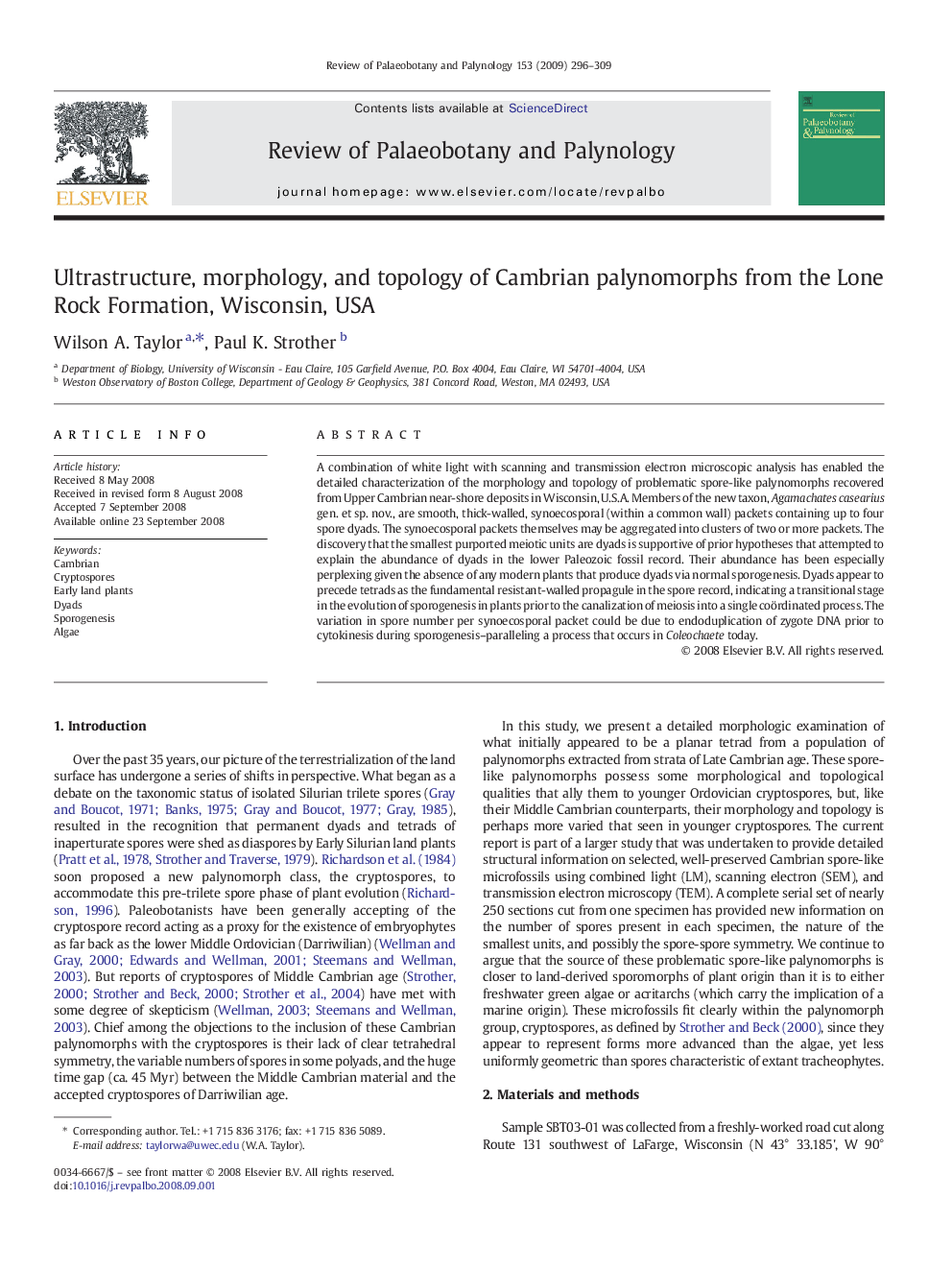| Article ID | Journal | Published Year | Pages | File Type |
|---|---|---|---|---|
| 4750820 | Review of Palaeobotany and Palynology | 2009 | 14 Pages |
A combination of white light with scanning and transmission electron microscopic analysis has enabled the detailed characterization of the morphology and topology of problematic spore-like palynomorphs recovered from Upper Cambrian near-shore deposits in Wisconsin, U.S.A. Members of the new taxon, Agamachates casearius gen. et sp. nov., are smooth, thick-walled, synoecosporal (within a common wall) packets containing up to four spore dyads. The synoecosporal packets themselves may be aggregated into clusters of two or more packets. The discovery that the smallest purported meiotic units are dyads is supportive of prior hypotheses that attempted to explain the abundance of dyads in the lower Paleozoic fossil record. Their abundance has been especially perplexing given the absence of any modern plants that produce dyads via normal sporogenesis. Dyads appear to precede tetrads as the fundamental resistant-walled propagule in the spore record, indicating a transitional stage in the evolution of sporogenesis in plants prior to the canalization of meiosis into a single coördinated process. The variation in spore number per synoecosporal packet could be due to endoduplication of zygote DNA prior to cytokinesis during sporogenesis–paralleling a process that occurs in Coleochaete today.
